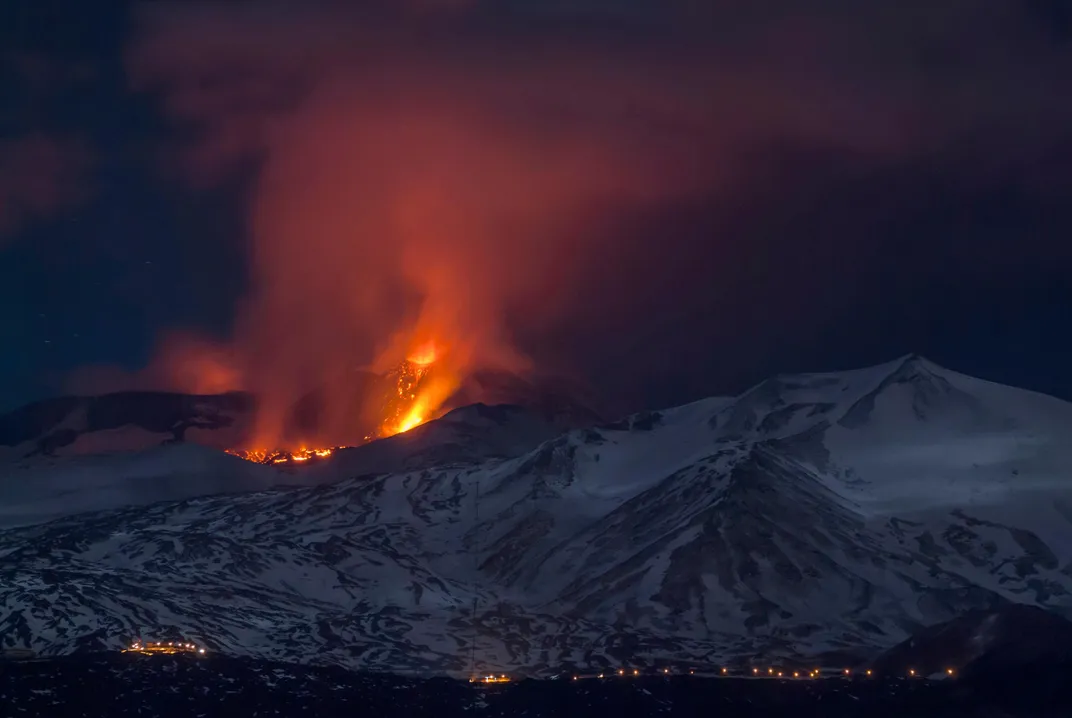High-Pressure Pockets Cause Fiery Blast at Mount Etna
Ten people were injured in the surprise blast
Sicily’s Mount Etna began erupting last month, spouting impressive bursts of fiery lava. Authorities reported that the eruptions were occurring at a safe distance from towns along the mountain’s slopes. But a group of tourists and journalists recently found themselves within reach of a violent blast, which occurred when scalding magma hit snow.
On Thursday, Claudio Lavanga reports for NBC News, ten people were injured after an explosion sent scalding rocks shooting down the slopes of Mount Etna. The blast was caused by a "phreatic eruption," which can happen "whenever magma and water come into close proximity," according to the Imperial Royal College of London.
In this case, high-pressure pockets of steam where created when scalding magma moved quickly over snow. "When the lava flows over a lot of snow at high speed, it can trap the snow underneath," Marco Neri, a volcanologist at Italy's National Institute of Geophysics and Volcanology, told Lavanga. "The snow then melts into water, then becomes vapor, and the pressure on the cap made of lava eventually leads to an explosion.”

A BBC team was reporting on the mountain at the time of the eruption and captured footage of the blast. “All of a sudden there was a first explosion that went up of steam,” BBC science correspondent Rebecca Morelle said in an interview with the network. “That didn’t seem too bad, but it was really the second explosion that threw up all of those boiling rocks.”
“You have to remember that magma is more than 1000 degrees Celsius in temperature,” she added.
Etna is one of the most active volcanoes in the world, according to National Geographic’s Sarah Gibbens, and it has been inspiring both fear and awe for centuries. The ancient Romans believed that Jupiter crushed and buried the giant Enceladus beneath the volcano, which supposedly caused its fiery blasts. Records from 122 B.C.E. indicate that an eruption blocked out the sun for several days and caused damage to the city of Catania on the coast.
Catania was virtually destroyed in 1669, when the mountain belched up lava, killing 17,000 people. In 1928, a powerful eruption swallowed the town of Mascali—though this time, residents were able to evacuate before the lava hit.
Fortunately, none of the injuries caused by Etna’s most recent eruption were serious. But BBC camerawoman Rachel Price will probably need some new outerwear. A lump of boiling rock burned clean through her coat.
Check out the intensity of volcanos the world over with Smithsonian Global Volcanism Program's mesmerizing interactive.